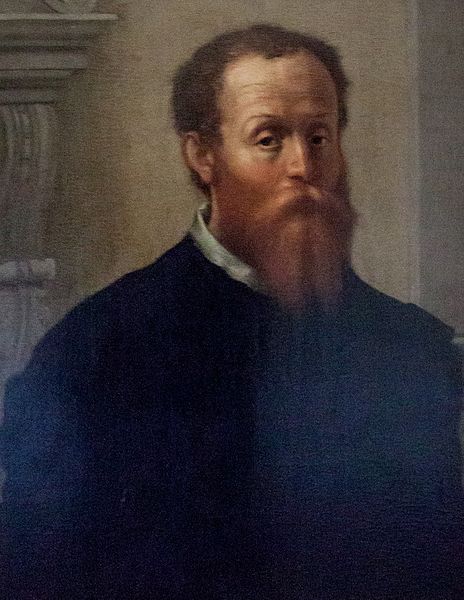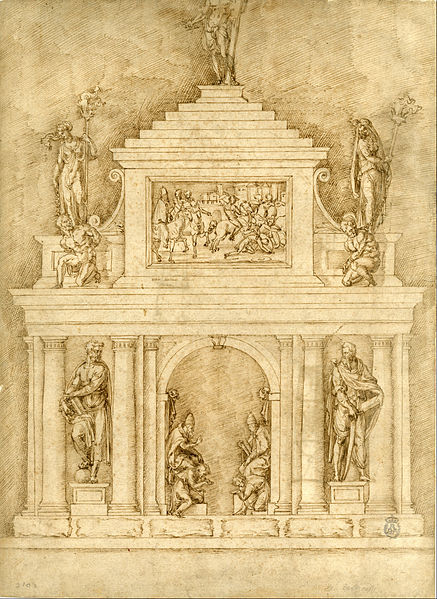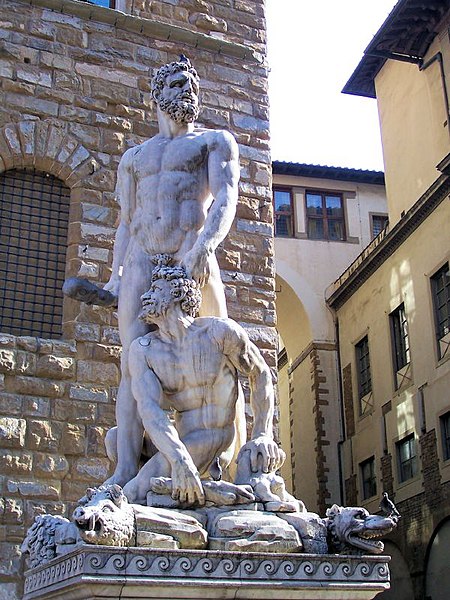Baccio Bandinelli, was an Italian Renaissance sculptor, draughtsman, and painter.
Self-portrait of Bartolommeo Bandinelli, 16th century
Baccio Bandinelli – Drawing of monument for Pope Leo X and Clement VII
The cartoon of the Battle of Cascina by Michelangelo
Hercules and Cacus
Giovanni Francesco Rustici
Giovan Francesco Rustici, or Giovanni Francesco Rustici, (1475–1554) was an Italian Renaissance painter and sculptor.
He was born into a noble family of Florence, with an independent income. Rustici profited from study of the Medici sculpture in the garden at San Marco, and according to Giorgio Vasari, Lorenzo de' Medici placed him in the studio of Verrocchio, and that after Verrocchio's departure for Venice, he placed himself with Leonardo da Vinci, who had also trained in Verocchio's workshop. He shared lodgings with Leonardo while he was working on the bronze figures for the Florence Baptistry, for which he was ill paid and resolved, according to Vasari, not to work again on a public commission. Moreover, an echo of Leonardo's inspiration is unmistakable in the much-discussed and much-reviled wax bust of "Flora" in Berlin, ascribed to a circle of Leonardo and most probably to Rustici. At this time, Pomponius Gauricus, in De sculptura (1504), named him one of the principal sculptors of Tuscany, the peer of Benedetto da Maiano, Andrea Sansovino and Michelangelo. It may have been made in France, perhaps in the circle of Rustici, who entered Francis I's service in 1528.

Giovan Francesco Rustici, as depicted in the 1682 edition of Academy of Sciences and Arts, containing the lives, and historical eulogies of illustrious men
Anghiari Battle after Leonardo da Vinci, Bargello museum
A Group of Warriors by Giovanni Francesco Rustici, Palazzo Vecchio







